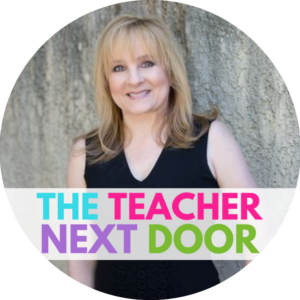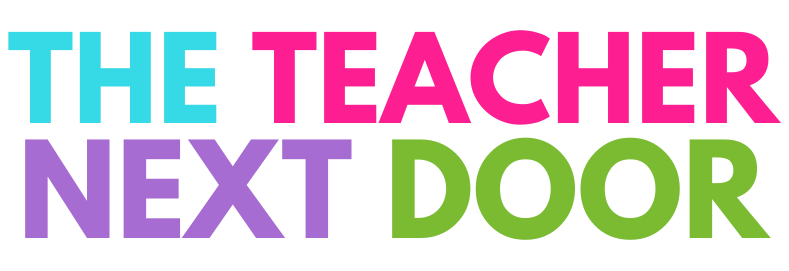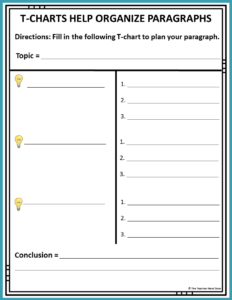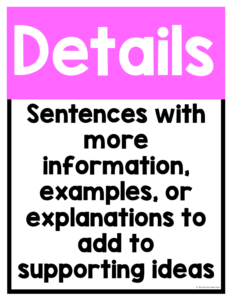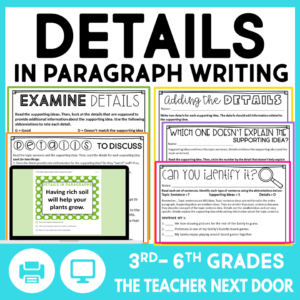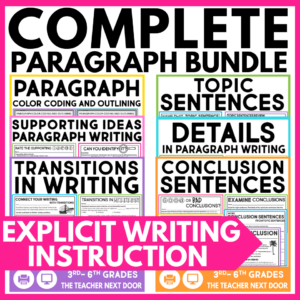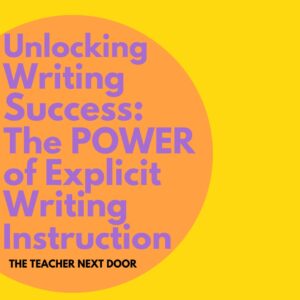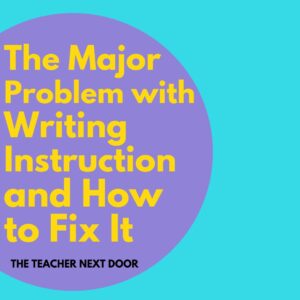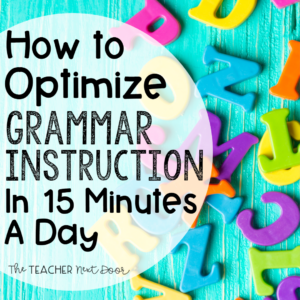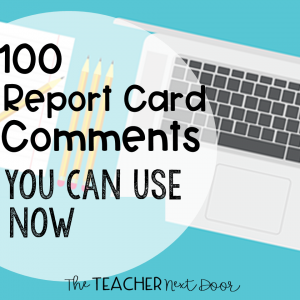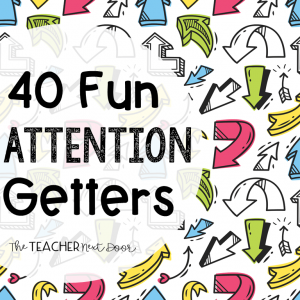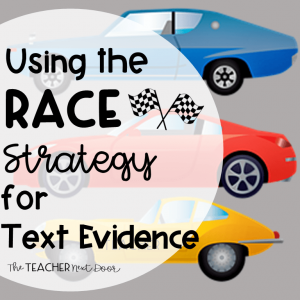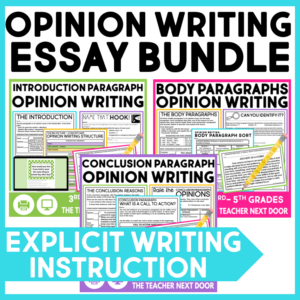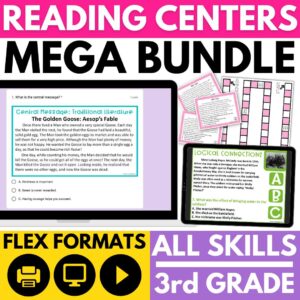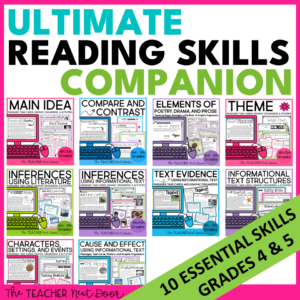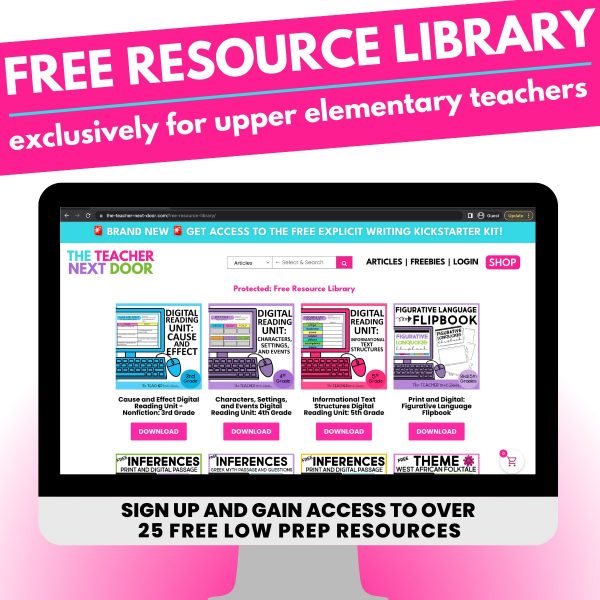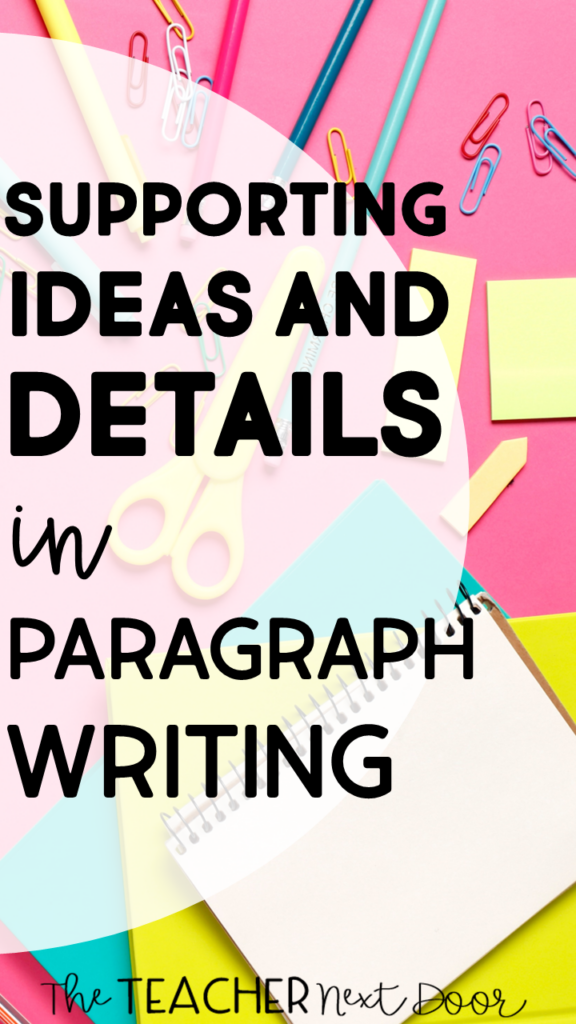
Teaching paragraph writing is crucial in my mind.
When you consider all the reports and papers a student will need to write during his/her school years and all the professional writing some students will eventually be doing in later careers, you realize that this is one of the skills we teach that has a very practical, useful purpose.
When I teach my students to write paragraphs, I introduce the basic parts of a paragraph, work on color coding paragraphs, and focused on topic sentences in detail. After that, it’s time to look at supporting ideas and details.
So, what exactly are Supporting Ideas and how do you use them in paragraph writing? Let’s get started…
1. Explain Supporting Ideas in Depth
Although we’ve briefly touched on what supporting ideas are at this point, it’s time to look at them in-depth! I tell students that supporting ideas are sentences with reasons to support our topic sentences. Supporting ideas are our proof.
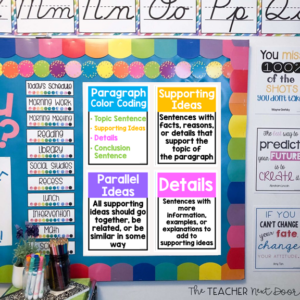
So, if the topic is One Person I Admire, the supporting ideas would be the reasons why you admire this person. The supporting ideas might include reasons such as the person is caring, hard-working, and has a sense of humor.
If the topic was Favorite Sports, the supporting ideas might be Football, Baseball, and Tennis.
Since there are usually three supporting ideas in each paragraph, I teach students to always use three as their goal, while explaining that some paragraphs may only have two and others may have four. To keep things simple, we stick with three for now.
2. Use Whiteboards to Practice Supporting Ideas
I love activities that are interactive and ones that allow all students (or as many as possible) to participate at the same time.
Whiteboards not only allow everyone to participate but let me see at a glance who has it and who doesn’t. If you don’t have a class set yet, for about $15 you can have Home Depot/Lowe’s cut white shower board for you into 12 x 12 pieces. To me, this is one of the best $15 I spend each year!
Here’s what I do with the whiteboards for this activity… First, students draw three stars or dots (bullet points) down the left side of their whiteboards. Then we play a game. I name a topic and ask students to write three possible supporting ideas (a word or two, NOT a sentence).
So, if I gave the topic of ______ School (my school), some students might write kids, teachers, principal…Other students might write working, learning, playing…Someone else might put classrooms, playground, lunchroom… All of these would be acceptable answers. This leads to my little chat about how different our answers can be in writing, and still be correct.
BUT that doesn’t mean that ALL answers are correct, and we go over that too.
To prepare for this activity, you can make a list of topic ideas beforehand (sometimes thinking of them off the top of your head can be tough!), or there’s also a copy included in the Paragraph and Color Coding resource, that works on paragraph organization.
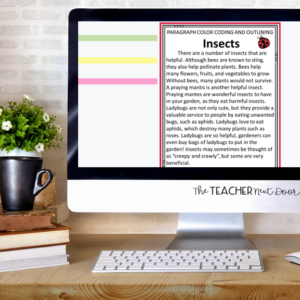
3. Teach the Concept of Supporting Ideas Being “Parallel”
After we’ve practiced the supporting idea game several times, I like students to play a different game to work on supporting ideas. When all students have their whiteboards out, I call on three students for one team and three students for the second team. Each team brings whiteboards and expo markers to the front and they face the class. One team is on the right and the other is on the left, with the captains standing next to each other in the middle.
I’ll do a quick diagram to hopefully make it a little more clear:
Team 1 X X X (← team captain →) X X X Team 2
I explain that when writers write supporting ideas, those supporting ideas need to go together or match. They have to be “parallel”. I give students some examples of three possible supporting details, and we talk about why the example is or isn’t parallel.
For example, if the topic was the ocean and someone chose sharks, sand, and swimsuits… each supporting idea by itself would be okay but placing them together in the same paragraph is not ideal. They don’t really go together well. They aren’t parallel.
A better option might be swimming, making sandcastles, surfing (things you do at the beach)…or sharks, eels, and octopuses (“scary” ocean creatures).
After a few examples, I explain the game. I tell the teams the same topic and the captain on each team writes down the first supporting idea for his/her team. Once the second team member has seen it, that person writes down a second supporting idea that goes with the first one (is parallel) and shows it to the second and third team members. The second person then writes down a supporting idea and shows it to the third team member. Then the last team member writes down the third and last supporting idea.
I also have each student show the whole class his/her supporting idea. The game seems like a race but in reality, it isn’t. Both teams may “win” if their supporting ideas go together.
After both teams are finished, I read the supporting ideas out loud and the rest of the class gives a simple thumbs up, a sideways thumb, or a thumbs down to indicate if that team was successful. If they weren’t, I gently question them to help them realize the error of their ways, lol.
4. Introduce Details
If supporting ideas were people, their best friends would be the details. Just like supporting ideas support the topic sentence, details support the supporting ideas. Details allow the writer to go more in-depth and to give explanations and examples that prove the supporting idea. Without details, a paragraph would be like a skeleton, in need of some “meat on its bones”.
In fact, without details, a paragraph seems choppy and certainly not as interesting. So, we spend a bit of time working with details and also do some whiteboard work with this too.
5. Use Colored Construction Paper Strips to Organize a Future Paragraph
Now we’re ready to plan our very first official paragraph of the year…woohoo! I give each student colored construction paper strips that I’ve cut beforehand. The size isn’t super important, but I use 2 inches by 9 inches for each. Each student gets two green (for the topic sentence and conclusion sentence), three yellow (for the three supporting ideas), and nine pink (for the details).
The topic I always like to use for this paragraph is “My Favorite Season”. It’s one that students usually have a strong opinion about and one that everyone has real-life experience making it relatable.
First, I ask students to place the strips in the correct order on their desks. I check to see that everyone has green, yellow, 3 pink, yellow, 3 pink, yellow, 3 pink, and finally green. Then, I ask students to write a word or two (NOT full sentences) on the paper strips. This is our planning guide…our outline.
I usually gather these up after a quick check-in with each student to make sure he/she is on the right track. I paper clip each student’s stack of paper strips in order and put them away for later. In a week or two, after we’ve finished working on ALL parts of a paragraph, students will be ready to take out these strips and use them to make a nice first paragraph.
Now that we’ve looked at supporting ideas, I hope this has given you a few tips that you can use for writing lessons.
If you’d like the ease of having a whole set of paragraph materials that are ready to print and go, here’s my Complete Paragraph Bundle, a resource I really love using! My favorite part…now it includes BOTH print AND digital!
If you’d like to get more teaching ideas for paragraph writing, here are a few posts you might like:
5 Tips for More Effective Paragraph Writing
